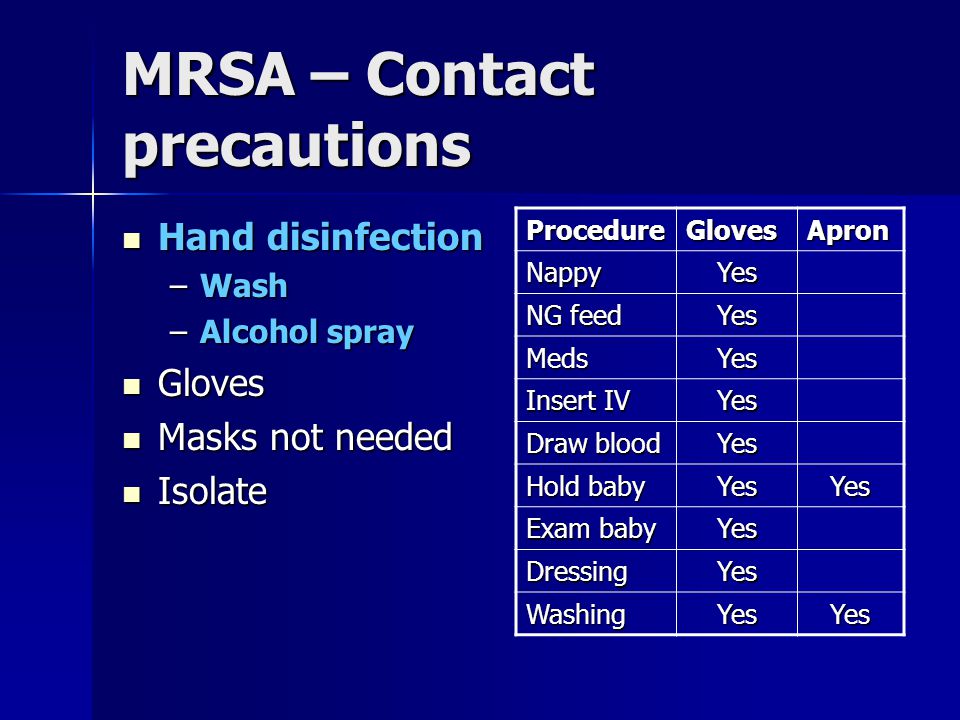Mrsa is often found. MRSA Infection: Symptoms, Causes, and Prevention Strategies
What are the key symptoms of MRSA infection. How is MRSA transmitted in healthcare settings and the community. What are effective prevention strategies for MRSA. How is MRSA diagnosed and treated. Who is at highest risk for MRSA infections.
Understanding MRSA: A Dangerous Antibiotic-Resistant Bacteria
MRSA, which stands for Methicillin-resistant Staphylococcus aureus, is a type of staph bacteria that has developed resistance to many common antibiotics. This makes MRSA infections particularly challenging to treat and potentially dangerous.
MRSA infections typically manifest as skin infections, but can also cause more serious invasive infections. The bacteria can spread through direct contact with infected individuals or contaminated surfaces.
Key Facts About MRSA
- MRSA is resistant to methicillin and many other antibiotics
- It can cause skin infections as well as more severe invasive infections
- MRSA spreads through direct contact with infected people or contaminated surfaces
- There are two main types: healthcare-associated (HA-MRSA) and community-associated (CA-MRSA)
Recognizing MRSA Infection Symptoms
MRSA infections often begin as small red bumps on the skin that can quickly develop into deep, painful abscesses. Recognizing the symptoms early is crucial for prompt treatment.
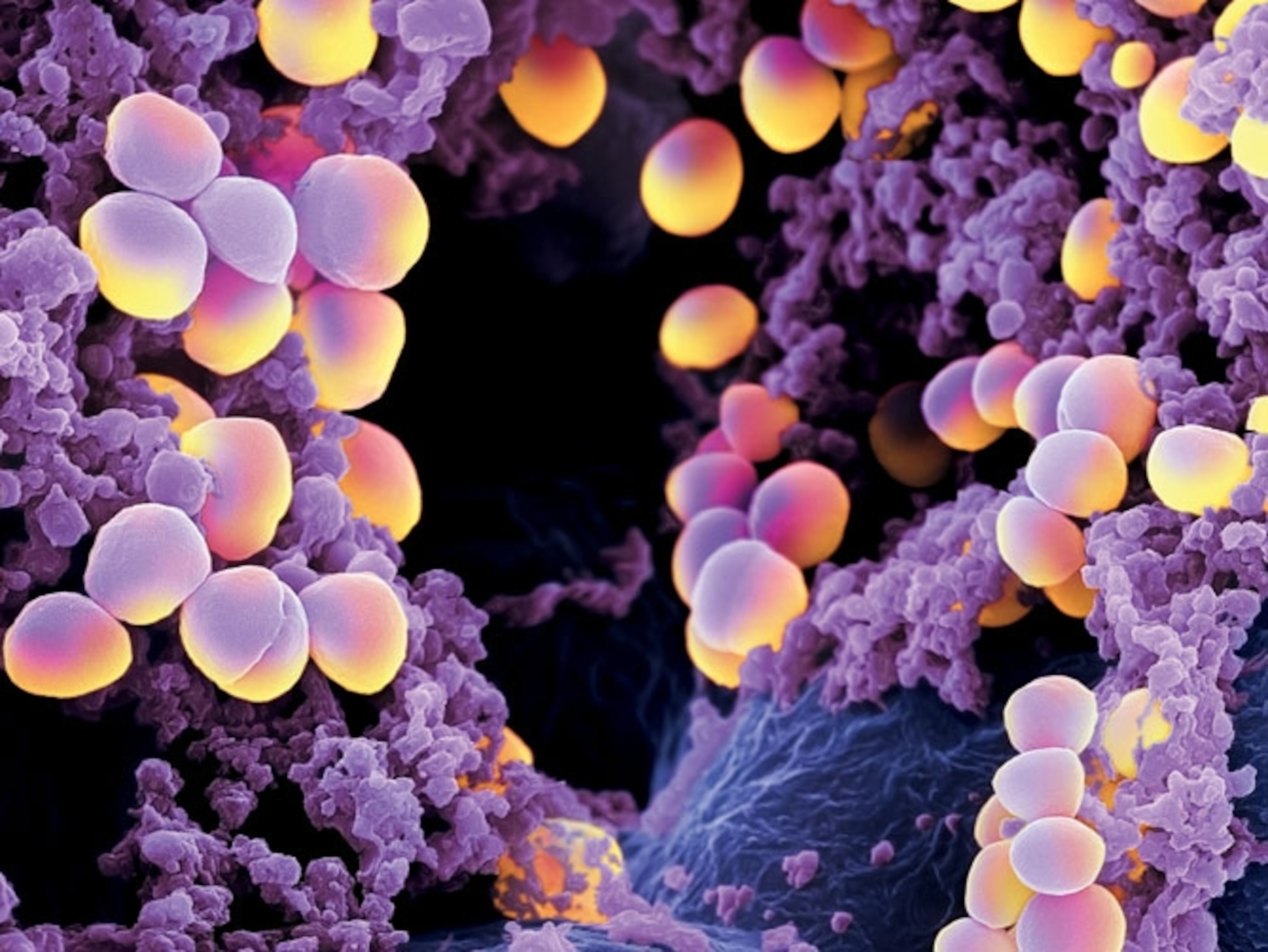
Common Symptoms of MRSA Skin Infections
- Swollen, red bumps that are painful to touch
- Boils or abscesses filled with pus
- Skin lesions that may resemble spider bites
- Areas of skin that feel warm to the touch
- Fever may be present, especially with more severe infections
Can MRSA infections occur in other parts of the body? While skin infections are most common, MRSA can also cause more serious invasive infections in the bloodstream, lungs, or other organs. These invasive infections may present with symptoms like high fever, chills, shortness of breath, or severe pain.
MRSA Transmission: How the Infection Spreads
Understanding how MRSA spreads is essential for implementing effective prevention strategies. The bacteria can be transmitted through direct contact with infected individuals or by touching contaminated surfaces.
Healthcare-Associated MRSA (HA-MRSA)
HA-MRSA infections typically occur in healthcare settings like hospitals, nursing homes, and dialysis centers. These infections are often associated with invasive medical procedures or devices.
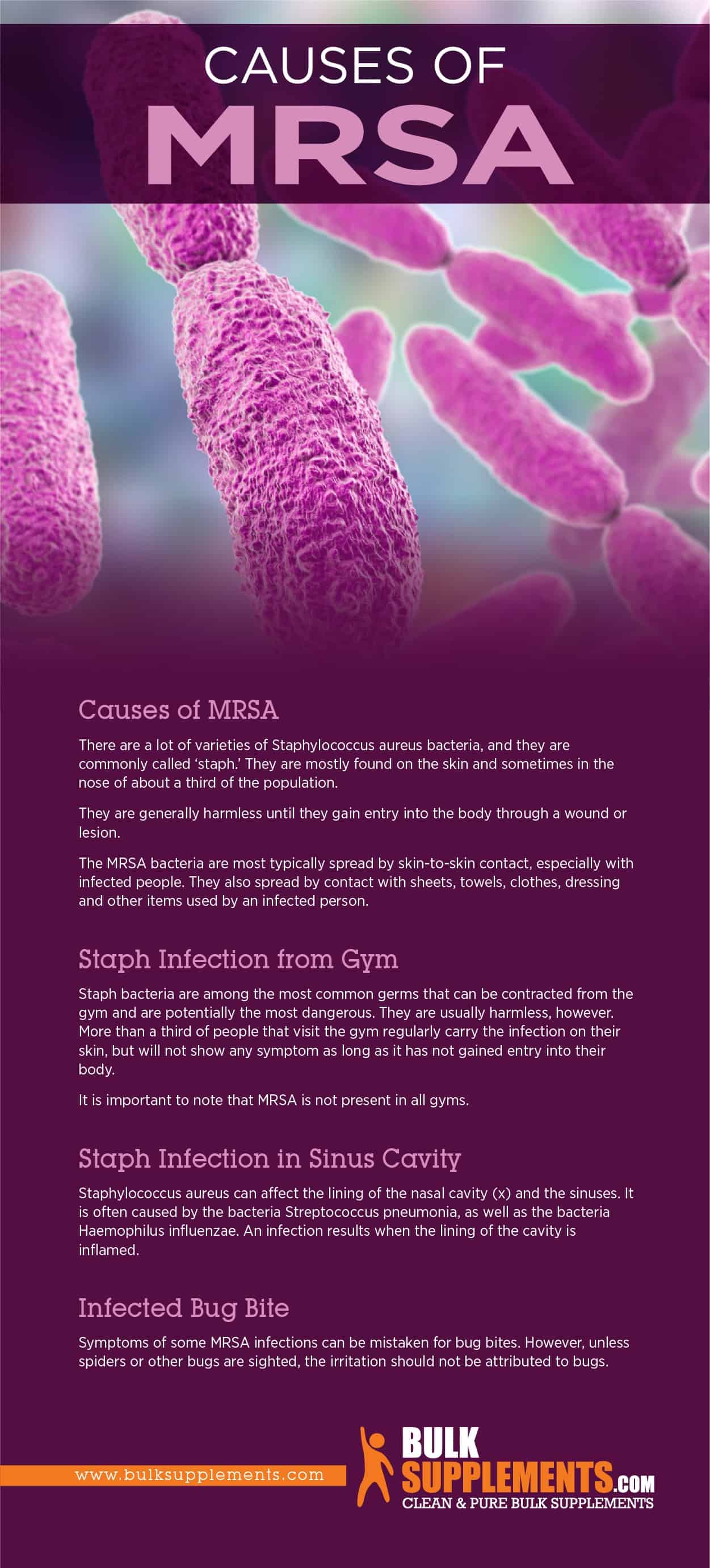
How does HA-MRSA spread in healthcare settings?
- Through healthcare workers with contaminated hands
- Via contaminated medical equipment or surfaces
- Through invasive procedures like surgeries or catheter insertions
- Among patients in close proximity to infected individuals
Community-Associated MRSA (CA-MRSA)
CA-MRSA infections occur among people in the wider community, often in otherwise healthy individuals. These infections typically start as skin infections and can spread through close physical contact.
What are common ways CA-MRSA spreads in the community?
- Direct skin-to-skin contact, especially in crowded living conditions
- Sharing personal items like towels, razors, or athletic equipment
- Through cuts or abrasions in the skin
- In settings where there is frequent skin-to-skin contact, like sports teams or childcare facilities
Risk Factors for MRSA Infection
While anyone can potentially develop a MRSA infection, certain factors increase the risk. Understanding these risk factors can help individuals and healthcare providers take appropriate precautions.
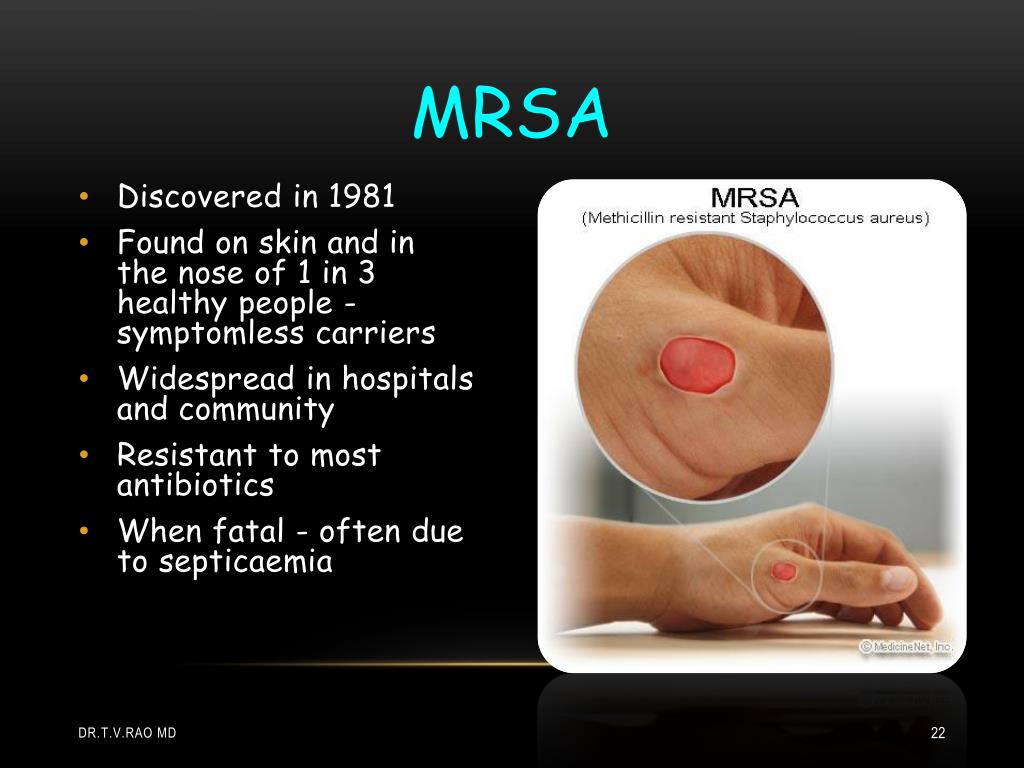
Healthcare-Associated Risk Factors
- Recent hospitalization or surgery
- Living in a long-term care facility
- Presence of invasive medical devices (e.g., catheters, feeding tubes)
- Weakened immune system due to illness or medication
- Frequent antibiotic use
Community-Associated Risk Factors
- Participation in contact sports
- Living in crowded conditions (e.g., military barracks, dormitories)
- Sharing personal items in gyms or locker rooms
- Having frequent skin-to-skin contact with others
- Poor hygiene practices
Are certain populations at higher risk for MRSA infections? Yes, some groups have an elevated risk, including:
- Healthcare workers
- People with chronic illnesses like diabetes or HIV
- Injection drug users
- Children in daycare settings
- Athletes, especially those in contact sports
Diagnosing MRSA Infections
Accurate diagnosis of MRSA infections is crucial for implementing appropriate treatment and prevention measures. Healthcare providers use various methods to identify MRSA infections.

Diagnostic Procedures for MRSA
- Physical Examination: A healthcare provider will examine the affected area for signs of infection.
- Sample Collection: A sample of pus from an infected wound or nasal secretions may be collected.
- Laboratory Testing: The collected sample is cultured in a lab to identify the bacteria and test for antibiotic resistance.
- Rapid Tests: Some facilities use rapid diagnostic tests that can identify MRSA within hours.
How long does it take to diagnose a MRSA infection? While rapid tests can provide results within a few hours, traditional culture methods typically take 24-48 hours to confirm the presence of MRSA and determine its antibiotic sensitivity.
Treatment Approaches for MRSA Infections
Treating MRSA infections can be challenging due to the bacteria’s resistance to many common antibiotics. However, several effective treatment options are available, depending on the severity and location of the infection.
Treatment Options for MRSA
- Incision and Drainage: For skin abscesses, draining the pus may be sufficient without antibiotics.
- Antibiotic Therapy: Specific antibiotics effective against MRSA may be prescribed.
- Topical Treatments: For minor skin infections, antibiotic ointments may be used.
- Intravenous Antibiotics: Severe or invasive infections may require IV antibiotics.
- Supportive Care: Treatment may include measures to manage symptoms and support overall health.
Which antibiotics are effective against MRSA? Some antibiotics commonly used to treat MRSA include vancomycin, daptomycin, linezolid, and trimethoprim-sulfamethoxazole. The choice of antibiotic depends on the specific strain of MRSA and the severity of the infection.

Importance of Completing Antibiotic Courses
It’s crucial for patients to complete the entire prescribed course of antibiotics, even if symptoms improve. Stopping antibiotics prematurely can lead to recurring infections and further antibiotic resistance.
Preventing MRSA Infections: Strategies for Individuals and Healthcare Settings
Preventing MRSA infections is a crucial aspect of public health and individual well-being. Implementing effective prevention strategies can significantly reduce the risk of infection and transmission.
Personal Prevention Strategies
- Practice good hand hygiene by washing hands frequently with soap and water
- Keep cuts and scrapes clean and covered until healed
- Avoid sharing personal items like towels, razors, or athletic equipment
- Shower after participating in sports or using shared gym equipment
- Clean and disinfect frequently touched surfaces regularly
Prevention in Healthcare Settings
- Implement strict hand hygiene protocols for healthcare workers and visitors
- Use proper protective equipment (gloves, gowns) when caring for infected patients
- Isolate patients with known MRSA infections
- Regularly clean and disinfect medical equipment and high-touch surfaces
- Implement antibiotic stewardship programs to reduce unnecessary antibiotic use
How effective are these prevention strategies? When consistently implemented, these prevention measures can significantly reduce MRSA transmission rates in both community and healthcare settings. Studies have shown that improved hand hygiene alone can reduce healthcare-associated infections by up to 50%.
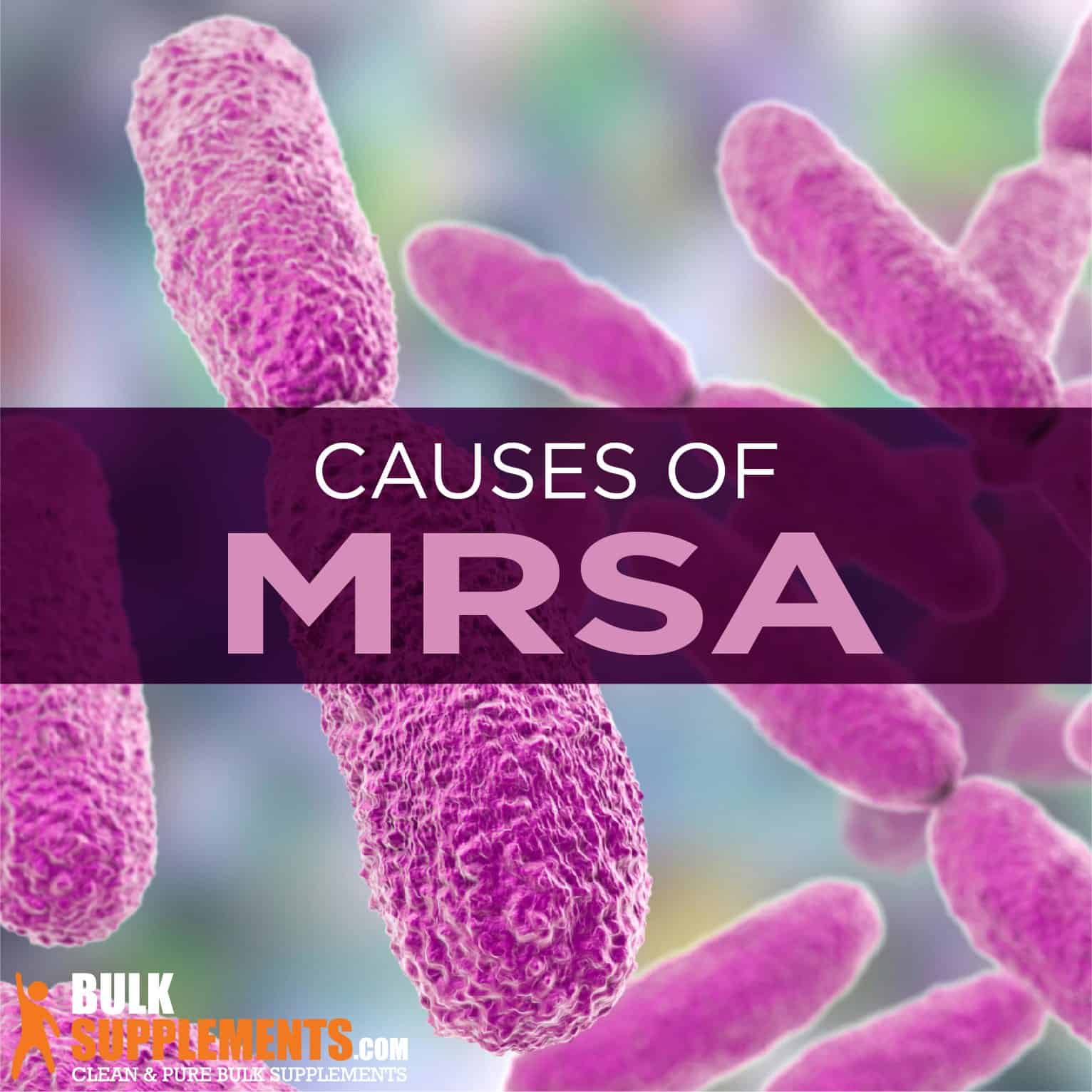
MRSA in Different Settings: Healthcare vs. Community
MRSA infections can occur in various settings, but the two main categories are healthcare-associated MRSA (HA-MRSA) and community-associated MRSA (CA-MRSA). Understanding the differences between these types is important for prevention and treatment strategies.
Healthcare-Associated MRSA (HA-MRSA)
HA-MRSA infections typically occur in healthcare settings and are often associated with invasive medical procedures or devices. These infections tend to be more severe and may affect various body systems.
- Common in hospitals, nursing homes, and dialysis centers
- Often affects older adults, critically ill patients, or those with weakened immune systems
- May cause serious infections like pneumonia, bloodstream infections, or surgical site infections
- Often resistant to a wider range of antibiotics
Community-Associated MRSA (CA-MRSA)
CA-MRSA infections occur among people in the wider community, often in otherwise healthy individuals. These infections typically start as skin infections and can spread through close physical contact.

- More common in crowded living conditions or among groups with frequent skin-to-skin contact
- Often affects younger, healthier individuals
- Usually causes skin and soft tissue infections
- May be less resistant to antibiotics compared to HA-MRSA
How do treatment approaches differ for HA-MRSA and CA-MRSA? While both types may require similar antibiotics, HA-MRSA infections often necessitate more aggressive treatment due to their potentially more severe nature and broader antibiotic resistance. CA-MRSA infections, especially minor skin infections, may sometimes be treated with incision and drainage alone, without antibiotics.
The Global Impact of MRSA: A Public Health Concern
MRSA has emerged as a significant public health concern worldwide, impacting healthcare systems, communities, and economies. Understanding the global impact of MRSA is crucial for developing effective strategies to combat this antibiotic-resistant threat.
MRSA Prevalence and Trends
- MRSA rates vary significantly between countries and regions
- Some countries have seen decreases in MRSA rates due to aggressive prevention measures
- In other areas, MRSA rates continue to rise, particularly in community settings
- Emergence of new MRSA strains poses ongoing challenges
Economic Impact of MRSA
MRSA infections result in substantial economic costs, including:

- Increased healthcare expenditures for treatment and prevention
- Longer hospital stays and additional medical procedures
- Lost productivity due to illness and disability
- Costs associated with infection control measures in healthcare settings
What is the estimated global economic burden of MRSA? While precise global figures are challenging to determine, studies estimate that MRSA infections cost healthcare systems billions of dollars annually. In the United States alone, the annual cost of MRSA infections has been estimated to be between $3.2 billion and $4.2 billion.
International Efforts to Combat MRSA
Recognizing the global threat of MRSA, many countries and international organizations have implemented strategies to address this issue:
- Development of national action plans to combat antibiotic resistance
- Implementation of surveillance systems to monitor MRSA rates
- Promotion of antibiotic stewardship programs
- International collaboration for research and data sharing
- Public awareness campaigns about antibiotic resistance and infection prevention
Future Directions in MRSA Research and Treatment
As MRSA continues to pose challenges to public health, ongoing research is crucial for developing new prevention strategies, diagnostic tools, and treatment options. Several promising areas of research are currently being explored.

Emerging Research Areas
- Development of new antibiotics effective against MRSA
- Exploration of alternative therapies, such as bacteriophages
- Advancements in rapid diagnostic techniques
- Investigation of MRSA colonization and transmission dynamics
- Research into vaccine development for MRSA prevention
Potential Future Treatments
Several innovative approaches are being studied for MRSA treatment:
- Combination therapies using existing antibiotics in new ways
- Development of antibiotic enhancers to overcome resistance mechanisms
- Exploration of nanotechnology-based treatments
- Investigation of immunomodulatory therapies to boost the body’s natural defenses
What are the challenges in developing new treatments for MRSA? The development of new antibiotics is a time-consuming and costly process. Additionally, bacteria can quickly develop resistance to new drugs, necessitating ongoing research and development efforts. Balancing the need for new treatments with responsible antibiotic use to prevent further resistance is a significant challenge.

The Role of Public Health Policies
Future efforts to combat MRSA will likely involve a combination of new treatments and public health strategies:
- Strengthening infection control practices in healthcare settings
- Implementing more robust antibiotic stewardship programs
- Enhancing surveillance systems to quickly identify and respond to outbreaks
- Promoting public education about antibiotic resistance and infection prevention
- Encouraging interdisciplinary collaboration between healthcare providers, researchers, and policymakers
As research continues and new strategies emerge, the fight against MRSA remains an ongoing challenge requiring vigilance, innovation, and collaboration across multiple sectors of healthcare and public health.
MRSA | translate English to Russian
МРЗС, резистентный к метициллину золотистый стафилококк
(Translation of MRSA from the Cambridge English–Russian Dictionary © Cambridge University Press)
Translations of MRSA
in Chinese (Traditional)
抗甲氧苯青黴素金黃色葡萄球菌(一種大多數抗生素無法殺滅的細菌,methicillin-resistant Staphylococcus aureus的縮寫)…
See more
in Chinese (Simplified)
抗甲氧西林金黄色葡萄球菌(一种大多数抗生素无法杀灭的细菌,methicillin-resistant Staphylococcus aureus的缩写)…
See more
in Portuguese
Staphylococcus aureus resistente à meticilina, SARM…
See more
in more languages
in Polish
in Turkish
MRSA (= gronkowiec złocisty oporny na metycylinę)…
See more
hastane mikrobu, hasatanelerde üreyen ve hastalıklara sebep olan bir tür bakteri…
See more
Need a translator?
Get a quick, free translation!
See the definition of MRSA in the English dictionary
Browse
MPV
Mr
MRI
Mrs
MRSA
Ms
MSc
MTV
much
Test your vocabulary with our fun image quizzes
- {{randomImageQuizHook.
 copyright1}}
copyright1}} - {{randomImageQuizHook.copyright2}}
Image credits
Try a quiz now
Word of the Day
handoff
UK
Your browser doesn’t support HTML5 audio
/ˈhænd.ɒf/
US
Your browser doesn’t support HTML5 audio
/ˈhænd.ɑːf/
in American football, a pass in which the ball is put directly into the hands of another player
About this
Blog
Having second thoughts (Changing our minds, Part 2)
Read More
New Words
super-smeller
More new words
Инфекция MRSA – Симптомы и причины
Обзор
Инфекция, вызванная метициллинрезистентным золотистым стафилококком (MRSA), вызывается типом стафилококковых бактерий, которые стали устойчивыми ко многим антибиотикам, используемым для лечения обычных стафилококковых инфекций.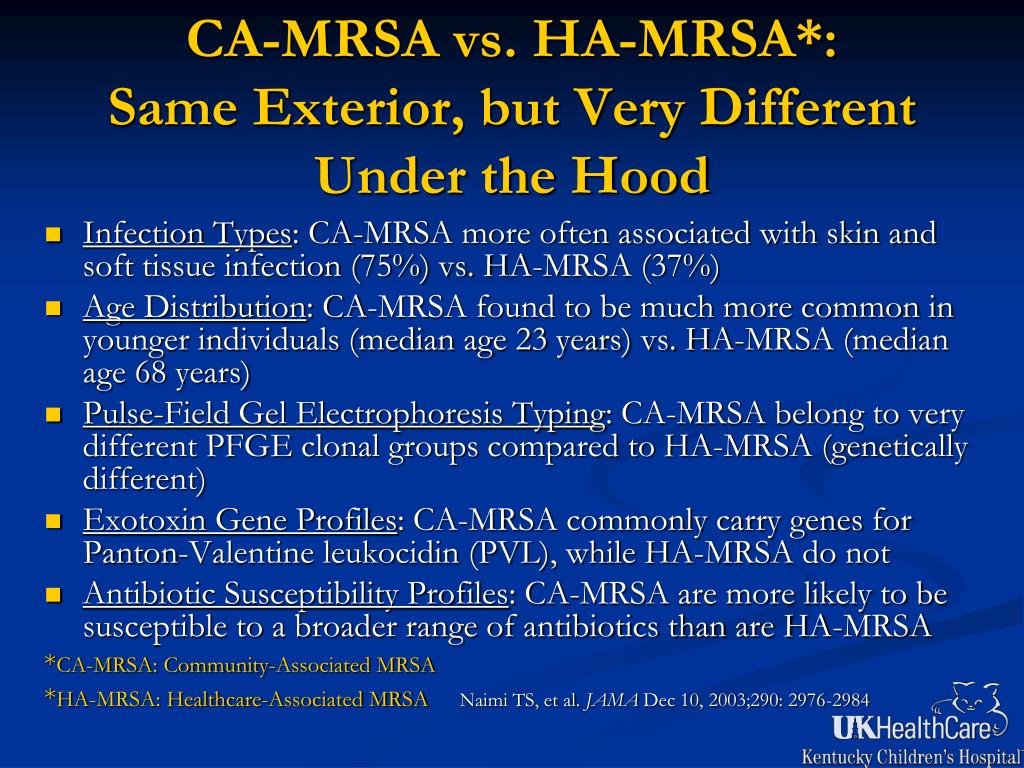
Большинство случаев заражения MRSA происходит у людей, которые находились в больницах или других медицинских учреждениях, таких как дома престарелых и диализные центры. Когда это происходит в этих условиях, оно известно как связанное с оказанием медицинской помощи 9.0007 MRSA (HA-MRSA). Инфекции HA-MRSA обычно связаны с инвазивными процедурами или устройствами, такими как операции, внутривенные трубки или искусственные суставы. HA-MRSA может распространяться медицинскими работниками, прикасающимися к людям грязными руками или людьми, касающимися грязных поверхностей.
Другой тип инфекции MRSA встречался в более широком сообществе — среди здоровых людей.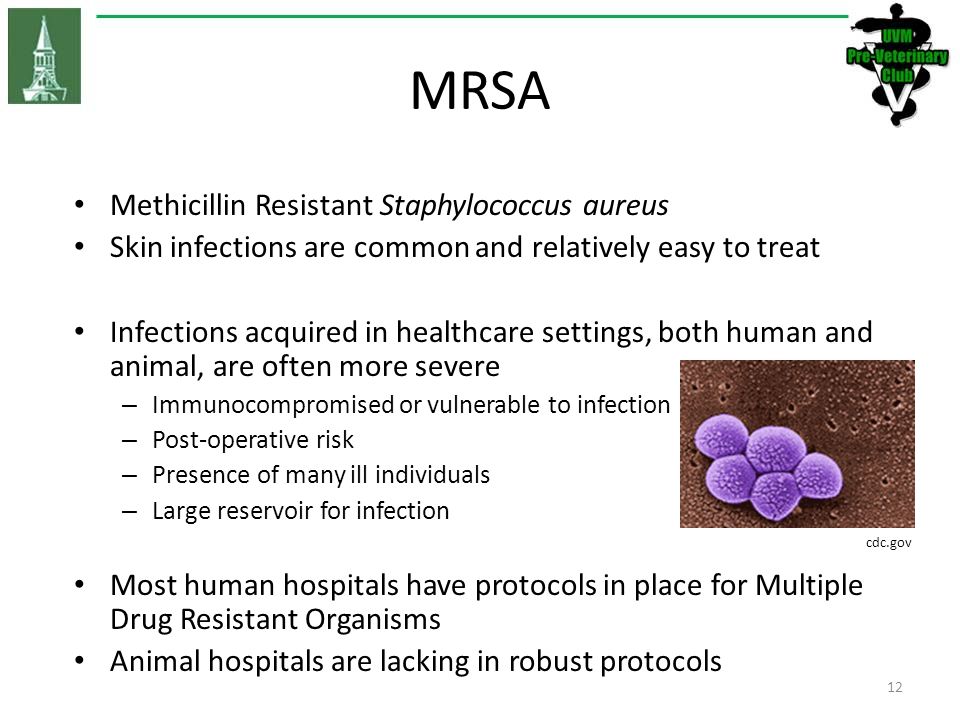 Эта форма, ассоциированная с сообществом MRSA (CA-MRSA), часто начинается с болезненного кожного фурункула. Обычно он передается при контакте кожа-к-коже. К группам риска относятся такие группы, как школьные борцы, воспитатели и люди, живущие в тесноте.
Эта форма, ассоциированная с сообществом MRSA (CA-MRSA), часто начинается с болезненного кожного фурункула. Обычно он передается при контакте кожа-к-коже. К группам риска относятся такие группы, как школьные борцы, воспитатели и люди, живущие в тесноте.
Продукты и услуги.
- Книга: Книга здоровья в клинике Майо, 5 -е издание
- Информационный бюллетень: Письмо о здоровье клиники Майо – Цифровое издание
Симптомы
Стаф. небольшие красные бугорки, которые могут быстро превратиться в глубокие болезненные абсцессы.
Стафилококковые кожные инфекции, включая MRSA , обычно начинаются с опухших, болезненных красных бугорков, которые могут выглядеть как прыщи или укусы пауков. Зона поражения может быть:
- Теплый на ощупь
- Полный гноя или других выделений
- Сопровождается лихорадкой
Эти красные бугорки могут быстро превратиться в глубокие болезненные фурункулы (абсцессы), требующие хирургического дренирования.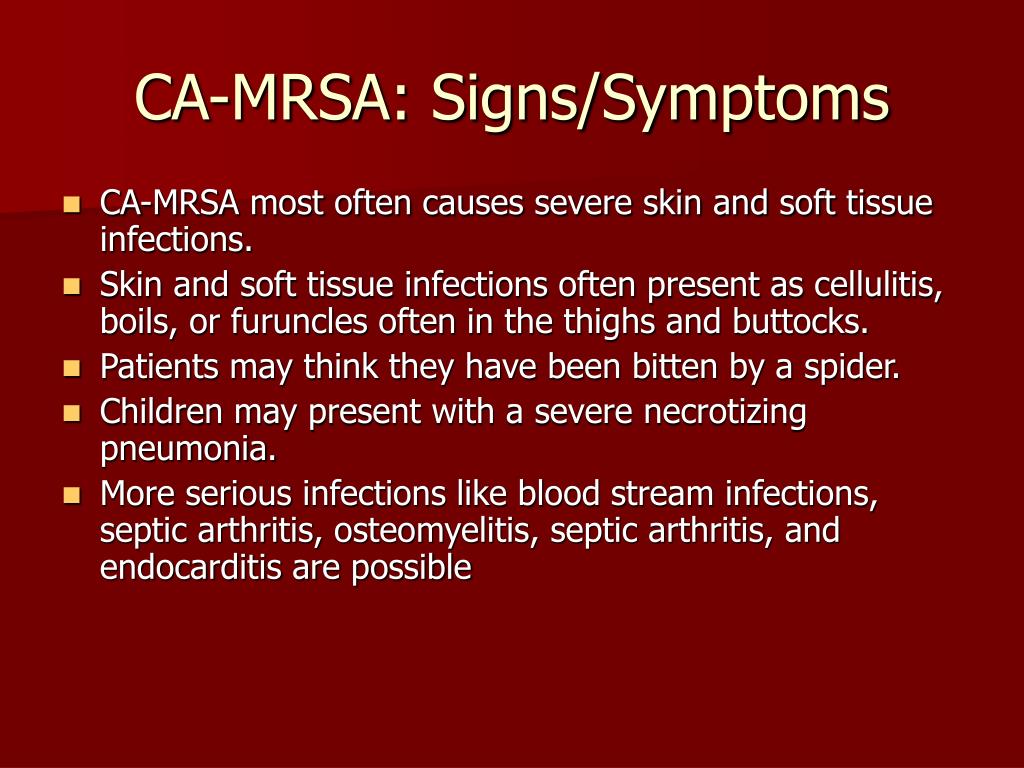 Иногда бактерии остаются на коже. Но они также могут проникать глубоко в организм, вызывая потенциально опасные для жизни инфекции в костях, суставах, хирургических ранах, кровотоке, сердечных клапанах и легких.
Иногда бактерии остаются на коже. Но они также могут проникать глубоко в организм, вызывая потенциально опасные для жизни инфекции в костях, суставах, хирургических ранах, кровотоке, сердечных клапанах и легких.
Когда обращаться к врачу
Следите за мелкими кожными проблемами — прыщами, укусами насекомых, порезами и царапинами — особенно у детей. Если раны кажутся инфицированными или сопровождаются лихорадкой, обратитесь к врачу.
Записаться на прием в клинику Mayo
Из клиники Mayo на ваш почтовый ящик
Зарегистрируйтесь бесплатно и будьте в курсе научных достижений, советов по здоровью и актуальных тем, связанных со здоровьем, таких как COVID-19, а также экспертных знаний по управлению здоровьем.
Чтобы предоставить вам самую актуальную и полезную информацию, а также понять, какая
информация полезна, мы можем объединить вашу электронную почту и информацию об использовании веб-сайта с
другая информация о вас, которой мы располагаем. Если вы пациент клиники Майо, это может
Если вы пациент клиники Майо, это может
включать защищенную информацию о здоровье. Если мы объединим эту информацию с вашей защищенной
медицинской информации, мы будем рассматривать всю эту информацию как
информацию и будет использовать или раскрывать эту информацию только так, как указано в нашем уведомлении о
практики конфиденциальности. Вы можете отказаться от получения сообщений по электронной почте в любое время, нажав на
ссылка для отписки в письме.
Причины
Существуют различные разновидности бактерий Staphylococcus aureus, обычно называемых «стафилококками». Бактерии стафилококка обычно находятся на коже или в носу примерно у одной трети населения. Бактерии, как правило, безвредны, если только они не попадают в организм через порез или другую рану, и даже в этом случае они обычно вызывают лишь незначительные проблемы с кожей у здоровых людей.
По данным Центров по контролю и профилактике заболеваний, около 5% населения хронически являются носителями стафилококкового типа, известного как MRSA .
Устойчивость к антибиотикам
MRSA является результатом десятилетий зачастую ненужного использования антибиотиков. В течение многих лет антибиотики прописывались при простуде, гриппе и других вирусных инфекциях, которые не реагировали на эти лекарства. Даже когда антибиотики используются надлежащим образом, они способствуют росту устойчивых к лекарствам бактерий, потому что они не уничтожают все микробы, на которые нацелены. Бактерии живут в ускоренном темпе эволюции, поэтому микроорганизмы, которые выживают при лечении одним антибиотиком, вскоре учатся сопротивляться другим.
Факторы риска
Поскольку госпитальные и внебольничные штаммы MRSA обычно встречаются в разных условиях, факторы риска для этих двух штаммов различаются.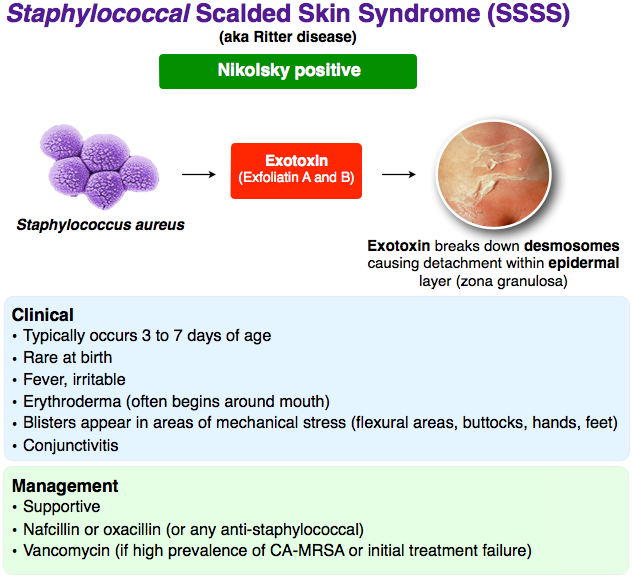
Факторы риска HA-MRSA
- Госпитализация. MRSA остается проблемой в больницах, где он может поражать наиболее уязвимых людей — пожилых людей и людей с ослабленной иммунной системой.
- Наличие инвазивного медицинского устройства. Медицинские трубки, такие как внутривенные катетеры или мочевые катетеры, могут обеспечить путь для MRSA проникает в ваше тело.
- Проживание в учреждении длительного ухода. MRSA распространен в домах престарелых. Носители MRSA могут распространять его, даже если они сами не больны.
Факторы риска CA-MRSA
- Занятия контактными видами спорта. MRSA может легко распространяться через порезы, царапины и кожный контакт.

- Проживание в тесноте или в антисанитарных условиях. Вспышки MRSA произошли в военных тренировочных лагерях, детских центрах и тюрьмах.
- Мужчины, занимающиеся сексом с мужчинами. Мужчины, имеющие половые контакты с мужчинами, имеют более высокий риск развития инфекции MRSA .
- Наличие ВИЧ-инфекции. Люди с ВИЧ имеют более высокий риск развития инфекции MRSA .
- Употребление запрещенных инъекционных наркотиков. Люди, употребляющие запрещенные наркотики путем инъекций, имеют более высокий риск инфекции MRSA .
Осложнения
Инфекции MRSA могут противостоять действию многих обычных антибиотиков, поэтому их труднее лечить. Это может позволить инфекциям распространяться и иногда становиться опасными для жизни.
Это может позволить инфекциям распространяться и иногда становиться опасными для жизни.
Инфекции MRSA могут поражать:
- Кровоток
- Легкие
- Сердце
- Кости
- Соединения
Профилактика
Профилактика HA-MRSA
В больнице людей, инфицированных или колонизированных MRSA , часто изолируют в качестве меры по предотвращению распространения MRSA . Посетителям и медицинским работникам, ухаживающим за людьми, находящимися в изоляции, может потребоваться носить защитную одежду.
Они также должны соблюдать строгие правила гигиены рук. Например, медицинские работники могут помочь предотвратить HA-MRSA , вымыв руки водой с мылом или используя дезинфицирующее средство для рук до и после каждого визита к врачу.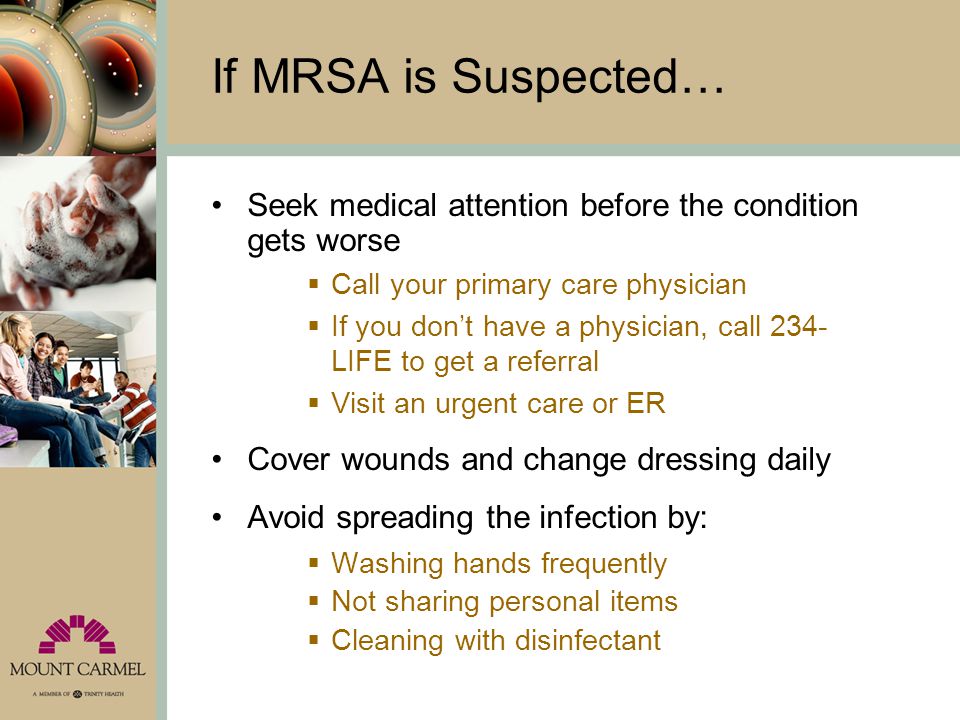
Больничные палаты, поверхности и оборудование, а также предметы для стирки нуждаются в надлежащей дезинфекции и регулярной чистке.
Профилактика CA-MRSA
- Мойте руки. Тщательное мытье рук остается вашей лучшей защитой от микробов. Быстро трите руки не менее 20 секунд. Носите с собой небольшую бутылочку с дезинфицирующим средством для рук, содержащим не менее 60% спирта, на случай, если у вас нет доступа к мылу и воде.
- Держите раны закрытыми. Содержите порезы и царапины в чистоте и закрывайте их чистыми сухими повязками, пока они не заживут. Гной из инфицированных язв может содержать MRSA , и закрытие ран может помочь предотвратить распространение бактерий.
- Держите личные вещи в секрете. Избегайте совместного использования личных вещей, таких как полотенца, простыни, бритвы, одежда и спортивный инвентарь.
 MRSA распространяется на зараженных объектах, а также при прямом контакте.
MRSA распространяется на зараженных объектах, а также при прямом контакте. - Душ после спортивных игр или тренировок. Принимайте душ сразу после каждой игры или тренировки. Используйте мыло и воду. Не делитесь полотенцами.
- Дезинфицировать постельное белье. Если у вас есть порез или язва, постирайте полотенца и постельное белье в стиральной машине, установленной на самую горячую воду (если возможно, с добавлением отбеливателя), и высушите их в горячей сушилке. Стирайте спортивную и спортивную одежду после каждого ношения.
Дополнительная информация
- Профилактика MRSA
Персонал клиники Майо
Сопутствующие товары
Продукты и услуги
Общая информация | МРЗС | CDC
- Что такое MRSA?
- Кто в опасности?
- Как МРЗС распространяется среди населения?
- Насколько распространен MRSA?
- Как я могу предотвратить инфекцию MRSA?
- Каковы симптомы инфекции MRSA?
- Что делать, если я вижу эти симптомы?
- Как предотвратить распространение MRSA?
MRSA означает устойчивый к метициллину Staphylococcus aureus , тип бактерий, устойчивых к некоторым антибиотикам.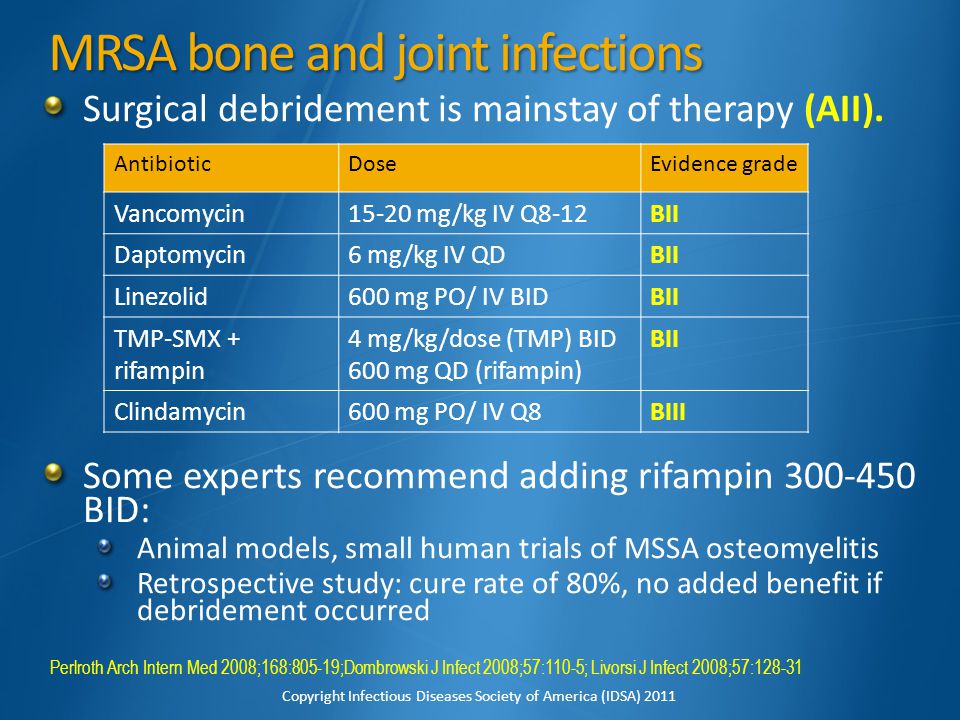
Вне медицинских учреждений
В обществе (где вы живете, работаете, делаете покупки и ходите в школу) MRSA чаще всего вызывает кожные инфекции. В некоторых случаях он вызывает пневмонию (легочную инфекцию) и другие инфекции. Если не лечить, инфекции MRSA могут стать тяжелыми и вызвать сепсис — крайнюю реакцию организма на инфекцию.
В медицинских учреждениях
В таких местах, как больница или дом престарелых, MRSA может вызвать серьезные проблемы, такие как
- инфекции кровотока,
- пневмония или
- инфекций области хирургического вмешательства.
Для получения дополнительной информации посетите страницу MRSA в медицинских учреждениях.
Любой человек может заразиться MRSA. Риск увеличивается при деятельности или в местах, связанных с скоплением людей, телесным контактом и общим оборудованием или расходными материалами. Некоторые из носителей MRSA могут заразиться MRSA.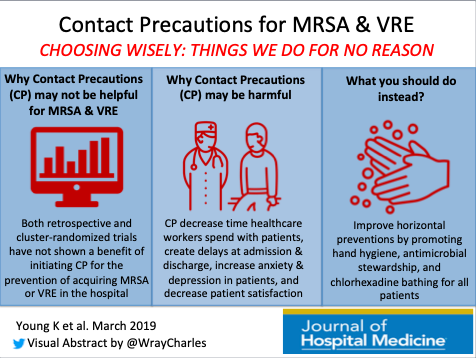 Неповрежденная кожа, например, при наличии ссадин или порезов, часто является местом заражения MRSA. Спортсмены, учащиеся детских садов и школьников, военнослужащие в казармах, а также те, кто получает стационарную медицинскую помощь или перенес операцию или медицинские устройства, вставленные в их тело, подвергаются более высокому риску заражения MRSA.
Неповрежденная кожа, например, при наличии ссадин или порезов, часто является местом заражения MRSA. Спортсмены, учащиеся детских садов и школьников, военнослужащие в казармах, а также те, кто получает стационарную медицинскую помощь или перенес операцию или медицинские устройства, вставленные в их тело, подвергаются более высокому риску заражения MRSA.
Показатели жизнедеятельности: Стафилококковая инфекция может убить [23:13 Mins]external icon
МРЗС обычно распространяется среди населения при контакте с инфицированными людьми или вещами, переносящими бактерии. Это включает в себя контакт с зараженной раной или совместное использование личных вещей, таких как полотенца или бритвы, которые касались зараженной кожи.
Опиоидная эпидемия также может быть связана с ростом стафилококковых инфекций в сообществе. Люди, употребляющие инъекционные наркотики, в 16 раз чаще заболевают серьезной стафилококковой инфекцией.
Подробнее об употреблении инъекционных наркотиков и риске заражения см.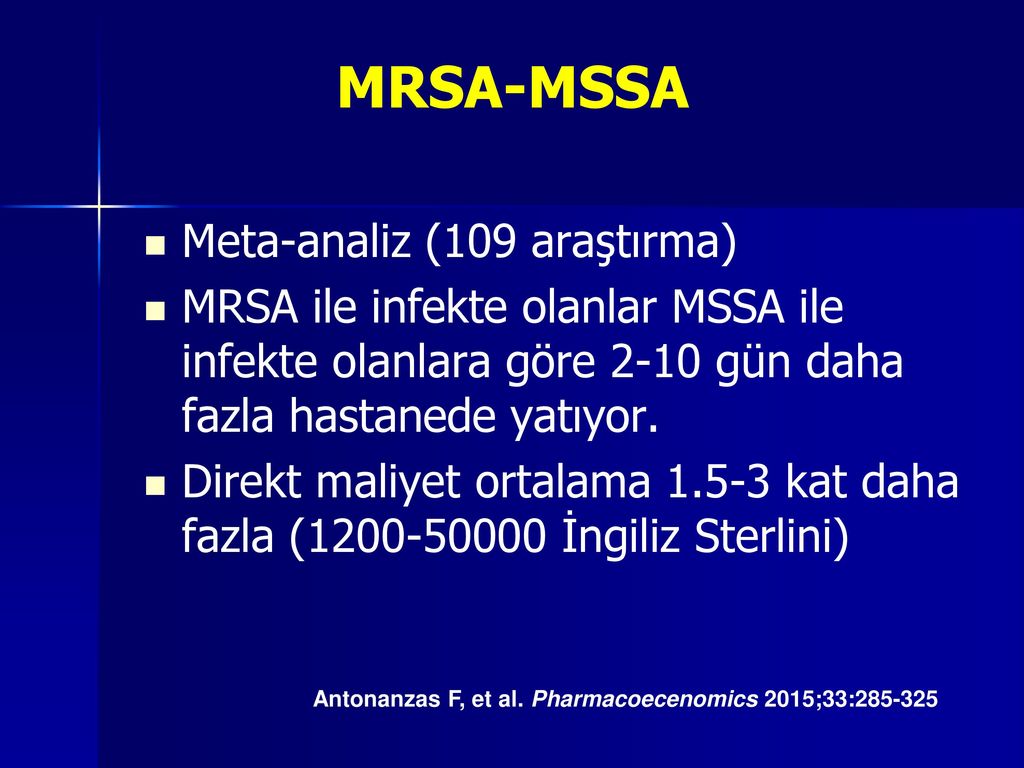 в этом информационном бюллетене pdf icon[PDF – 2 страницы]
в этом информационном бюллетене pdf icon[PDF – 2 страницы]
К началу страницы
Приблизительно 5% пациентов в больницах США являются носителями MRSA в носу или на коже.
К началу страницы
Вы можете предпринять следующие шаги, чтобы снизить риск заражения MRSA:
- Соблюдайте гигиену рук и тела. Часто мойте руки и регулярно очищайте свое тело, особенно после тренировки.
- Держите порезы, царапины и раны чистыми и закрытыми до заживления.
- Избегайте совместного использования личных вещей, таких как полотенца и бритвы.
- Если вы подозреваете, что у вас может быть инфекция, обратитесь за медицинской помощью как можно раньше.
К началу страницы
Симптомы инфекции MRSA зависят от пораженной части тела. Например, люди с кожными инфекциями MRSA часто могут испытывать отек, повышение температуры, покраснение и боль в зараженной коже. В большинстве случаев трудно определить, вызвана ли инфекция MRSA или другим типом бактерий, без лабораторных анализов, которые может назначить врач.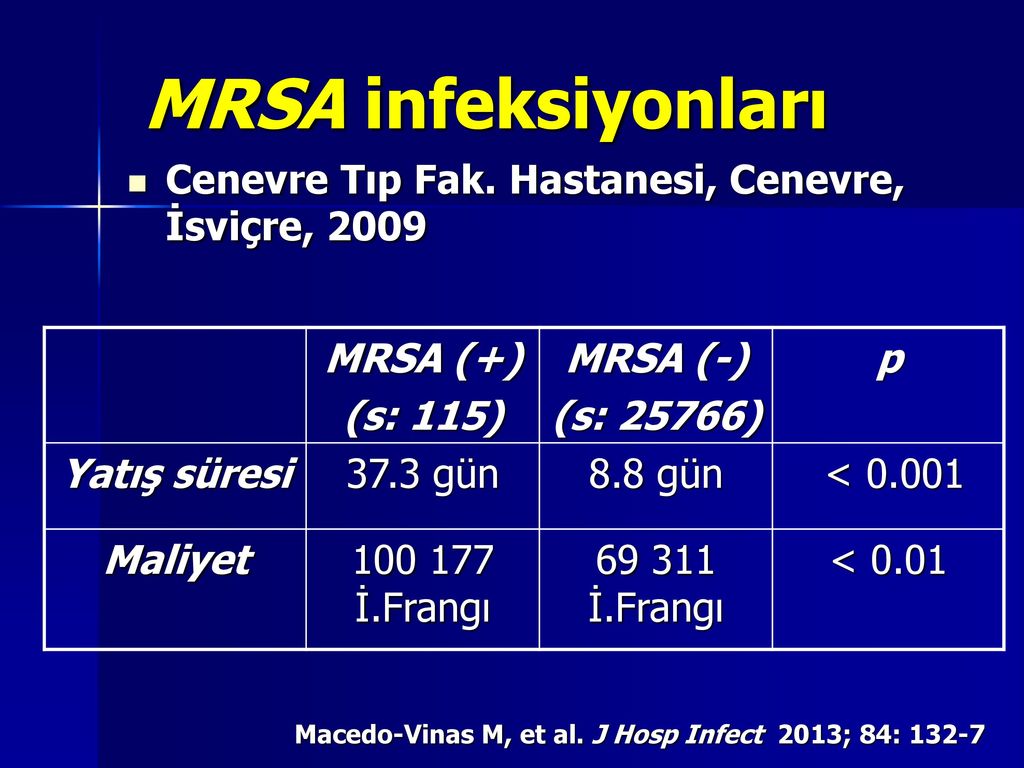 Некоторые кожные инфекции MRSA могут иметь довольно типичный вид, и их можно спутать с укусом паука. Однако, если вы на самом деле не видите паука, раздражение, скорее всего, не связано с укусом паука.
Некоторые кожные инфекции MRSA могут иметь довольно типичный вид, и их можно спутать с укусом паука. Однако, если вы на самом деле не видите паука, раздражение, скорее всего, не связано с укусом паука.
Большинство S. aureus кожных инфекций, включая MRSA, проявляются в виде бугорков или инфицированных участков на коже, которые могут быть:
- красными
- опухший
- болезненный
- теплый на ощупь
- полные гноя или других выделений
- в сочетании с лихорадкой
Фотографии инфекций MRSA.
К началу страницы
Глядя на кожу, вы не сможете определить, является ли это стафилококковой инфекцией (включая MRSA).
Раннее обращение за медицинской помощью снижает вероятность того, что инфекция станет серьезной.
Если у вас или у кого-то из членов вашей семьи появились признаки и симптомы MRSA:
- Обратитесь к своему лечащему врачу, особенно если симптомы сопровождаются лихорадкой.


 copyright1}}
copyright1}}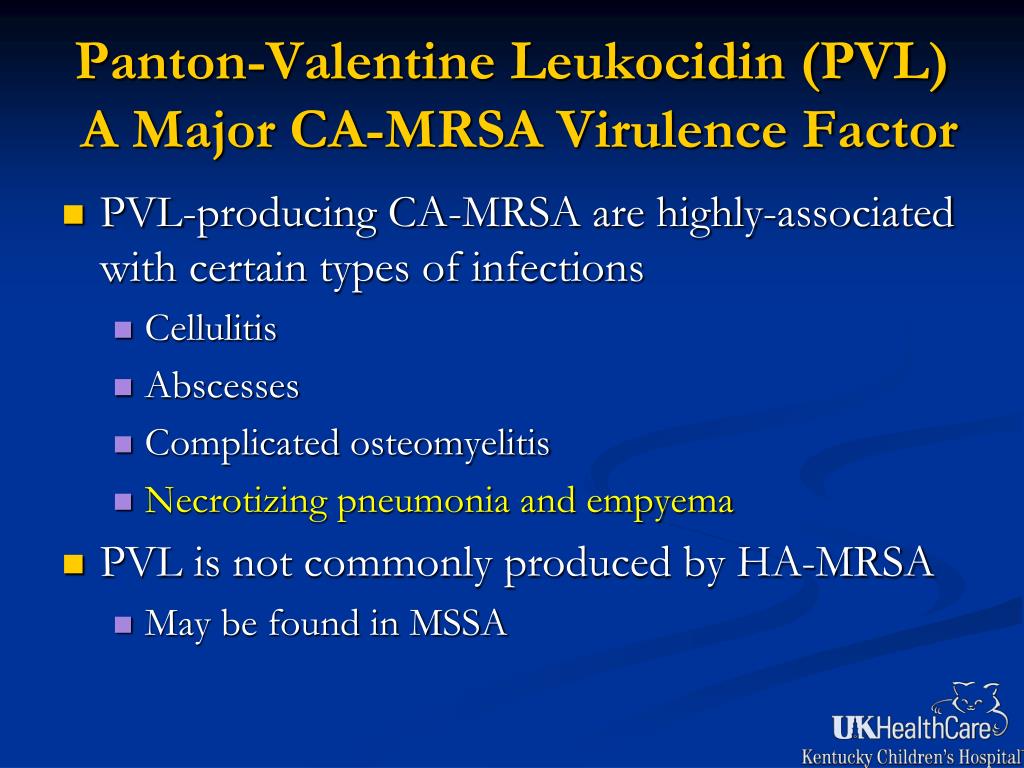
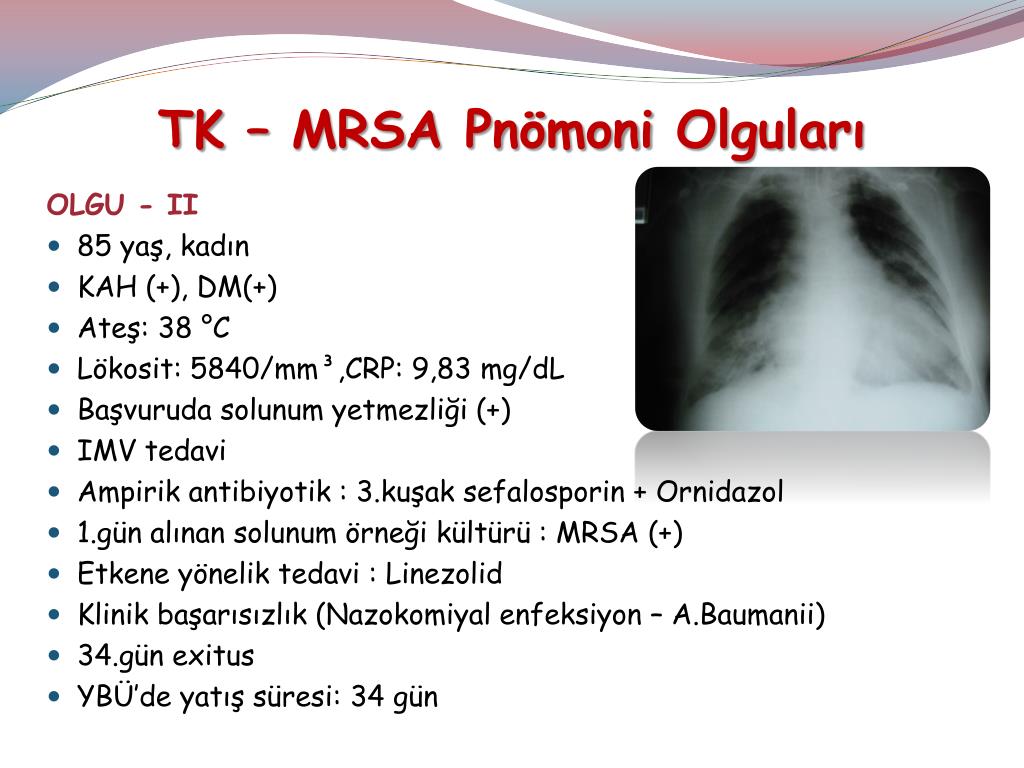 MRSA распространяется на зараженных объектах, а также при прямом контакте.
MRSA распространяется на зараженных объектах, а также при прямом контакте.